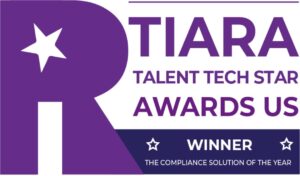Between 2011 and 2020, U.S. employers saw more than 33,000 heat-related work injuries and illnesses that resulted in time away from work. When temperatures rise, so does risk, especially for employees working outdoors or in physically demanding environments.
Preventing workplace accidents and heat-related illnesses requires a team effort. As an HR professional, it’s important to do your part, which means preparing teams for extreme heat conditions with policies and tools that keep everyone safe.
In this guide, we’ll explore what HR professionals need to know about heat-related health risks and how to prevent them.
Why HR Should Prioritize Heat Safety Now
Each year, thousands of workers suffer serious heat-related illnesses on the job. Heat-related illnesses can also increase the risk of secondary injuries due to fatigue or inattentiveness. In the worst cases, these scenarios have fatal consequences for exhausted workers and their peers.
Outdoor workers aren’t the only ones at risk of heat-related illness. Preventing workplace accidents also means taking care of indoor workers exposed to poor ventilation. For instance, employees who work in warehouses, kitchens, and industrial production facilities may be in danger of heat exhaustion, heat stroke, or dehydration.
The Basics of Heat-Related Illnesses
The key to preventing workplace accidents is building awareness. It’s vital to ensure that your entire HR team is familiar with the most common heat-related conditions, which include the following:
- Heatstroke: A life-threatening emergency that causes symptoms like confusion, slurred speech, and loss of consciousness
- Heat Exhaustion: Brought about by excessive sweating and dehydration, with symptoms like nausea, headache, and dizziness
- Dehydration: Lack of adequate fluid intake can lead to fatigue, confusion, and an increased risk of accidents
These conditions impact not just an employee’s comfort and health but also their ability to focus and make decisions. Educating your teams about the signs, symptoms, and dangers of these heat-related illnesses can go a long way in promoting worker safety.
Practical Tips for Preventing Workplace Accidents During the Summer Heat
Preventing workplace accidents due to heat starts with a proactive approach to employee care. Here’s what your human resources team can do to make a difference.
Encourage Breaks in Shaded or Air-Conditioned Areas
Workers need time to cool down, so schedule regular breaks in shaded spaces. If you can’t offer an indoor, air-conditioned break area, set up portable canopies to allow employees to get out of the sun. Consider setting up cooling stations with misting fans to keep your team members from overheating.
Encourage your on-site managers to enforce your company’s break policies. They should also be on the lookout for signs of dehydration, heat exhaustion, and heat stroke.
Set Up Hydration Stations
Make it easy for your team members to stay hydrated. Set up multiple water stations and make sure the water being dispensed is cold and accessible. Encourage employees to drink water every 15–20 minutes, even if they’re not thirsty.
If your employees work in physically demanding roles, consider offering electrolyte-replenishing drinks and snacks. Keeping your team members adequately hydrated can prevent cramps and disorientation and help them be more productive each shift.
Educate Your Team on Dressing for Safety
Wearing the right clothing can make a big difference when working in the sweltering heat. Light-colored, loose-fitting, breathable clothing is best for most situations. If your company requires uniforms, consider offering branded, seasonally appropriate hats, shirts, and other apparel as part of your summer clothing kit.
Talk to your team members about their dressing habits and make sure everyone has the right attire to stay safe. If you’re going to charge employees for branded uniforms, consider doing so via payroll deductions. The goal is to make safe gear and clothing more accessible.
Remember That Training Is Non-Negotiable
Purposeful training mitigates hazards and saves lives. As an HR leader, it’s up to you to plan and conduct heat safety training that covers the following:
- Signs and symptoms of heat-related illnesses
- Emergency response protocols
- Supporting and monitoring coworkers in hot conditions
- The importance of acclimating to warmer weather
Make training sessions interactive and repeat them before each summer season. During the sessions, provide real-world examples and encourage participants to ask questions.
Additionally, send out periodic reminders about working safely in the heat throughout the year, especially during the warmer months. Ensure that employees are aware of the support and resources you’re offering to help them beat the heat.
Consider surveying employees to gauge the impact of your efforts. For instance, you could ask them about the availability and cleanliness of water stations, as well as what snacks they would like on job sites.
Appoint a Designated Safety Officer
A safety officer is responsible for checking in with employees and monitoring them for signs of heat-related illness. Selecting a safety officer for every outdoor job site can be an effective means of preventing injuries. You’ll also need a response plan for handling heat-related medical emergencies, including who to contact for assistance.
Preventing Workplace Accidents With Helpful Technology
Need help implementing a visible and compliant safety strategy this summer? VirgilHR offers a user-friendly compliance platform designed to promote employee safety and protect your brand’s reputation. Schedule a demo today to learn more.






